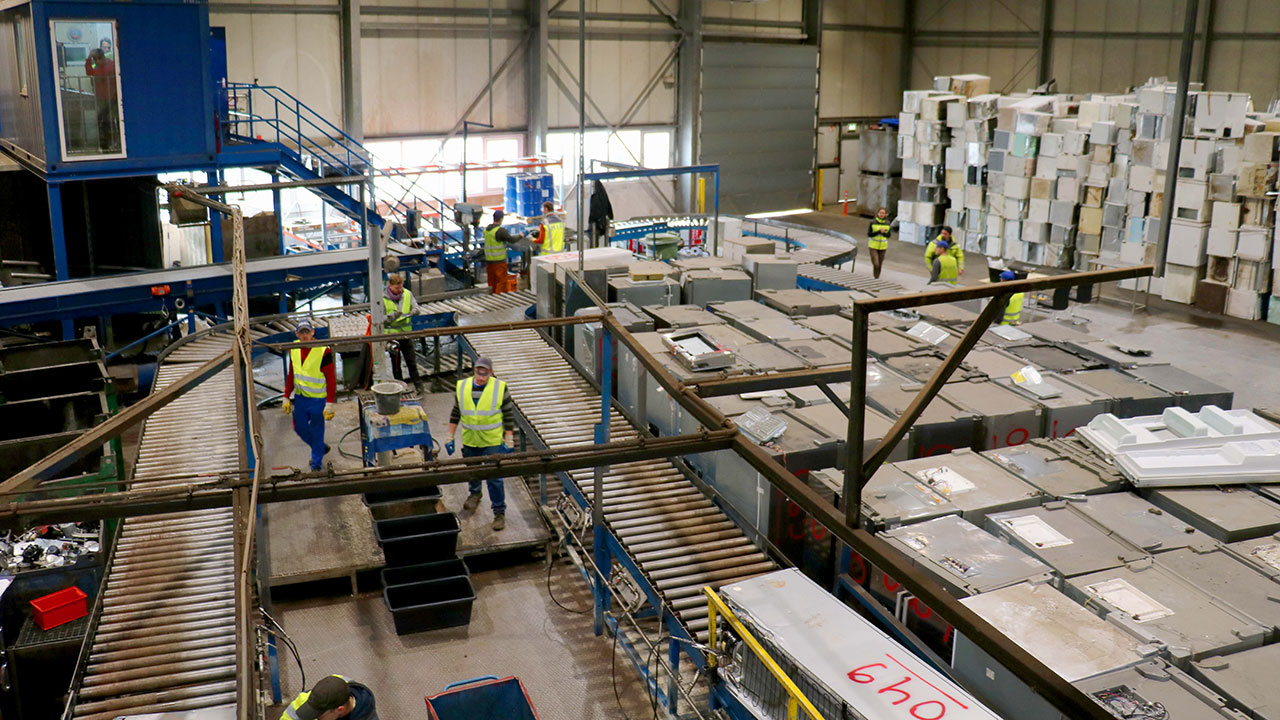Optimizing cooling appliances for recycling
A large-scale trial identifies key design elements for successful recycling of refrigerators and freezers.

Electrical appliances contain many valuable raw materials - but these are often lost at the end of the product cycle: The proportion of recycled raw materials in total production was 40% in Germany in 2016. In the "Circular by Design" project, researchers have now identified optimization opportunities using refrigerators and freezers as an example. The large-scale trial was funded by the German Federal Ministry of Education and Research with around 800,000 euros.
Manufacturers pay too little attention to end of product cycle
"Using the example of refrigerators and freezers - because 99.9 percent of all households in Germany have such an appliance - we want to show what material efficiency potential exists with regard to the recovery of the raw materials they contain, both in terms of the constructive product design and the choice of materials," explains project coordinator Simone Raatz from the Helmholtz Institute Freiberg for Resource Technology (HIF). She criticizes the fact that manufacturers have so far paid little attention to circularity and recyclability.
100 refrigerators disassembled and recommendations developed
"We selected 100 large refrigerators/freezers of different ages for the trial," says HIF researcher Magdalena Heibeck, describing the project approach. The end-of-life appliances were first characterized and then valuable and interfering materials such as visible circuit boards, cables and glass shelves, refrigerants and compressors were removed for recycling. Subsequently, the de-fragmented refrigeration equipment was shredded and separated. "We will now evaluate all the data obtained, as well as the product quality of the recyclates, and establish a connection to the constructional design of the refrigeration units," says Heibeck, explaining the next steps. "From this, we can draw conclusions for the product design and derive recommendations for action for the refrigerator manufacturers." The latter also have a key role to play in enabling better recycling because, until now, every refrigerator or freezer has had a different design and must be prepared correspondingly differently for draining the cooling circuit and mechanical recycling. "This involves a considerable amount of time and, above all, a lot of muscle power," Heibeck continues.
Sample design planned
The researchers see potential for savings, for example, in weight: 60% is made of steel, aluminum and copper, and 35% of plastics. Furthermore, alternatives to poorly recyclable materials such as PU foam and coolants should be found. The project team now wants to develop an exemplary design for a refrigerator/freezer that is optimized for both energy efficiency and recyclability.
bl


